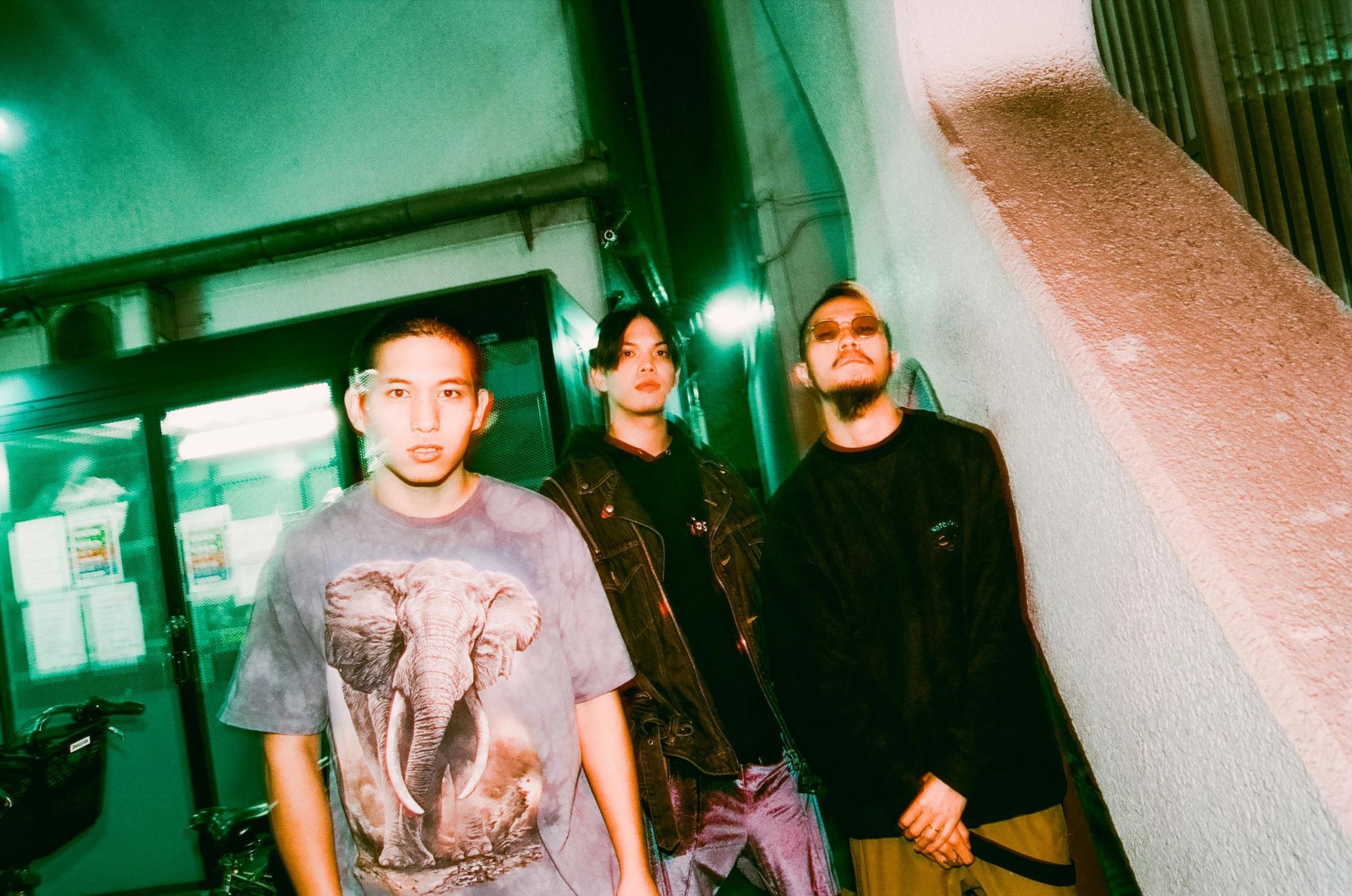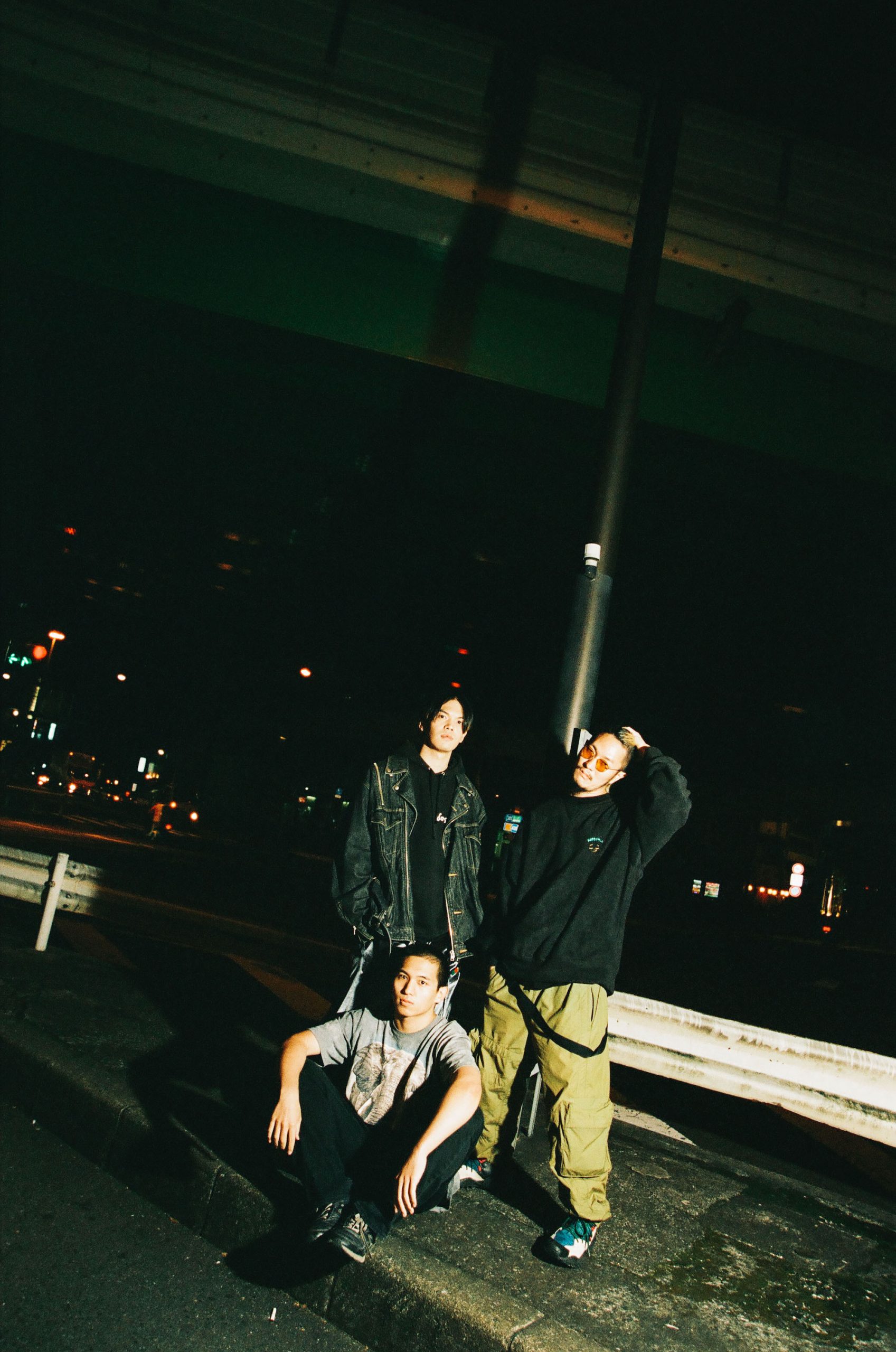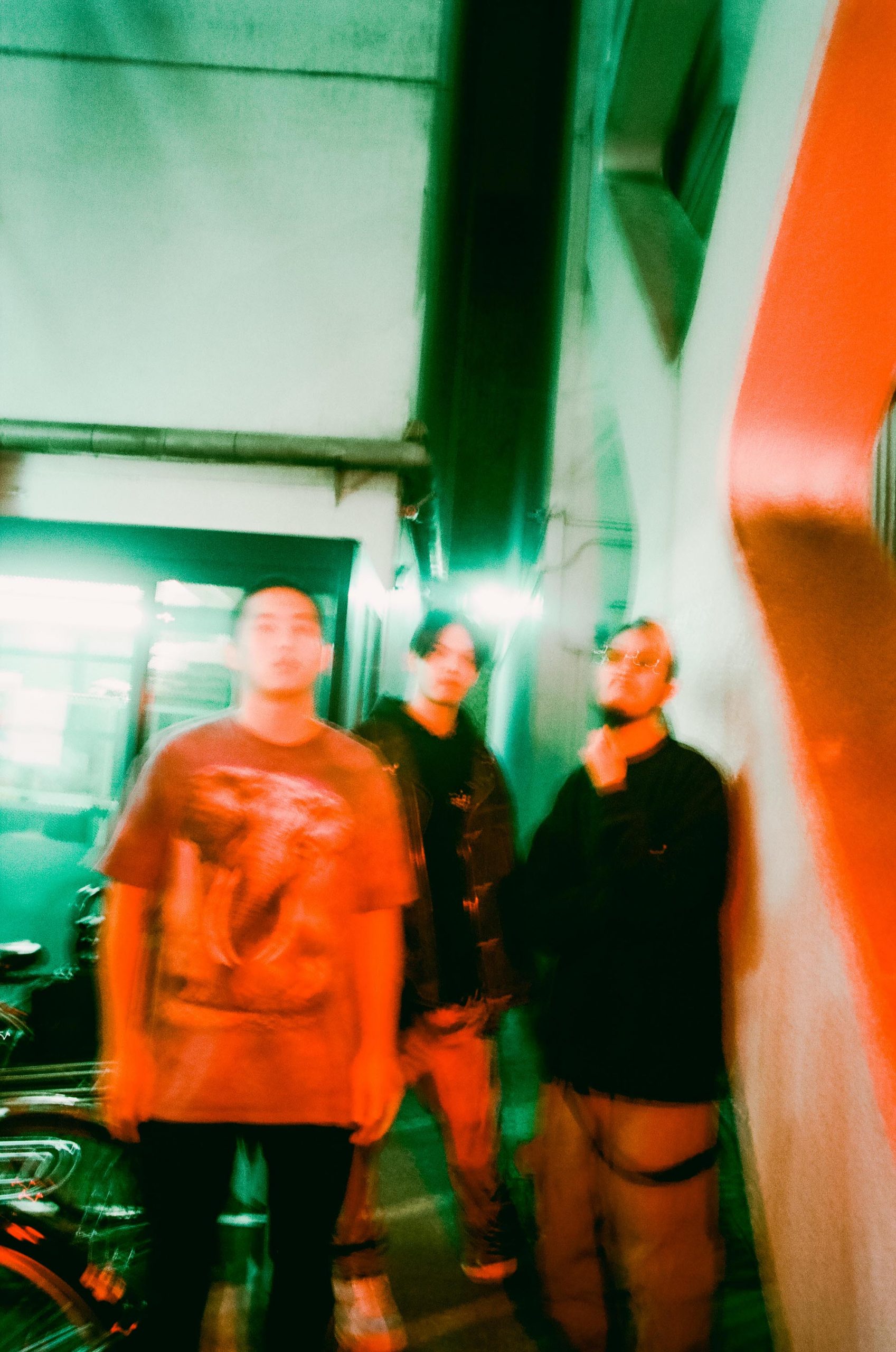At the end of the day, it’s about oomph and the ordinary. Dos Monos makes that clear.
The release of their third album Dos Siki 2nd Season, their fourth album Larderello in conjunction with TV Tokyo’s experimental program Futa, and their new song “Obo”. Between these milestones, the trio performed live and engaged in radical activities like having various dialogues. The sudden appearances and disappearances of Dos Monos are exciting. They soften the stiffened thinking of the world while simultaneously creating a rawness that shocks us.
I believe this rawness is what Dos Monos calls “an extraordinary ordinary that transcends sex appeal.” In the first part of this interview, a wrap-up of this year, they talk about their Theater D show held back in September and their collaboration with SMTK. While Dos Monos’ music is danceable, it doesn’t stop there; it allows new “traffic” to pass and creates pleasure by opening up previously unconnected circuits. We’ll dive even deeper in the second part of the interview. The members urge that music should be more compelling, which ultimately leads to the statement that we require more provocative people. Then they end up discussing a particularly infamous professional baseball director.
Dos Monos is doing something fascinating, and the intriguing anecdotes in this interview are a testament to that. However, they also fear they’re merely having fun. The trio can’t achieve their destination alone. In the second half of the interview, Zo Zhit describes this destination as “restoring culture in society.” Perhaps this requires us to (implicitly) transform ourselves to be more provocative and subversive.
“An experience where my stoic thinking came undone”; gaining a new understanding through performing live
——This summer, you released Dos Siki 2nd Season, a reinterpretation of your sophomore album, Dos Siki. In September, you had a live performance, titled Theater D, with guest artists. My friends and acquaintances all claim it was the best show of the year. It was amazing. Did things go well from the rehearsal phase?
Botsu aka NGS: It was so good. Rehearsals were the best part.
Zo Zhit: We tend to sound amazing during rehearsals, surprisingly. The entertainment element directed towards the audience is exclusive to performing live, of course.
——Although “A Spring Monkey Song feat. Soushi Sakiyama, SMTK, and Tomomi Oda” is a collaborative song, it also sounded like a battle. As in, rather than harmonizing with your performance, it seemed like Soushi Sakiyama-san rapping through his teeth, and Tomomi Oda-san and SMTK’s pulsating performance were in a battle. How would you describe the magic that occurred onstage?
Zo Zhit: As Dos Monos, we wanted to do something that a band couldn’t do and create a groove that a band couldn’t produce. It’s said that Chris Dave revolutionized grooves in bands. But there’s a certain beauty in humans using beats made with machines. We wanted to make something twisted only with a machine or a DAW. We’ve always wanted to make Dos Monos as a band but were afraid it would become boring, so we didn’t try it. But we decided to take this opportunity to try it out.
Zo Zhit: I thought we had to make a lot of time for band practice to find the ideal groove, but when we had a jam session, it ended up being good in about an hour (laughs). It was an experience where my stoic thinking came undone. For three years since our debut, I had kept that lid shut, but I felt like we could do it much easier than I imagined. I felt satisfied.
A thrilling performance with SMTK and Soushi Sakiyama
——A lot of your guests’ forte was improvisation, so your live set was impressive. You could always count on SMTK to do something exciting. Meanwhile, Sakiyama-san has an unexpected thrill to him. It was interesting how he wasn’t trying to emit that deliberately. There was this uncertainty with him.
Botsu aka NGS: More than this being about the show, the fact that we threw Sakiyama-kun in there among all those sounds was thrilling (laughs).
Zo Zhit: Since his debut as a high school student, Sakiyama-kun’s been playing live constantly, but he hasn’t gotten used to the stage; in a good way (laughs). That’s weirdly impressive.
Botsu aka NGS: But I think it was vital that we had once worked together in the studio with the same people. It would’ve been so hard if we hadn’t done that and played in sessions for the live show instead.
Zo Zhit: Yeah, we had a common understanding. But we didn’t record in the studio at the same time. First, I removed the drums from my song “A Spring Monkey Song” and asked Shun Ishiwaka to play the drums, then I removed the bassline and asked Marty (Holoubek) to play the bass, then I removed the guitar parts and asked Tokutaro Hosoi to play the guitar, then I removed the piano and chorus and asked Tomomi Oda to play the piano and sing the chorus. Like so, I made the song by subtracting and adding each factor. The band didn’t play together, and in part, the cut-and-paste vibe and each component operating in a scattered way created the groove.
Zo Zhit on discovering hidden grooves while producing songs
——You were featured on SMTK’s second album that came out this year, SIREN PROPAGANDA. I’d like to know about how you made the track, “Headhunters (feat. Dos Monos).” Unlike your usual style, Zo Zhit-san, where you sample sounds based on memory and sensations, you sampled SMTK’s sounds to make the song. Did your creativity change because of the lack of memories attached to and the limited nature of the source?
Zo Zhit: With sampling, everything’s pretty much the same as far as the material is concerned. It doesn’t matter if you have an associated memory or not, as in the end, it’s almost the same once you deconstruct the sound and “cook” it. More importantly, I want to go beyond my ideas whenever I make a song from different sources. While I’m playing around, I inevitably can’t bring myself to cut out subtle flickering noises.
Zo Zhit: I like how you could pick up the flickering sounds and create something while making discoveries. It’s like an impromptu dance. On the other hand, when I have a phrase I want to use that makes me go like, “I want to use that,” I could see the trajectory. So, I play it safe, in a way. I try not to use samples in that manner too much.
——Instead of sampling sounds based on memory, you search for unpredictable moments.
Zo Zhit: Well, for “Obo,” our latest song, I referenced about four, five songs. I didn’t use any samples, but I saw the goal from the start. I had an ideal image in my mind, more so than usual, and tried to make that concrete. This time, I used the bass included in Ableton, which was rare for me, but I created a fun sound. I usually use samples to create the bassline, so it’s easy to make strange sounds. But this time around, I played the bassline on the keyboard. Even if I come up with the bassline first, the most creative part is when I play it and mess around with the tone.
Zo Zhit: The role of the score or midi is minimal. I’m not that interested in tweaking the phrases themselves. The bassline is the same from start to finish in that song. I used to change the development of the drums a lot when I initially started making music on a computer, but I don’t have that desire right now. TaiTan’s verses go well with gimmicky developments, so I do the bare minimum for that, but I usually go with a loop all the way through.
A simple substructure and a complex superstructure; the element that makes Dos Monos’ world special
——Many of your songs are danceable, but they also have a story. One can listen to the former sonically, and one can listen to the latter to find meaning. As such, the two circuits intertwine. That’s what makes your music fascinating.
Zo Zhit: The upper layer (the part that makes one think narratively) and the lower layer (the part that speaks to one’s physical body)—the superstructure and substructure—describe the relationship between the beat and other sounds. In our case, the substructure is quite simple, and the superstructure is complicated. I had a phase where I immersed myself in studying the superstructure. I didn’t like that and started to want to incorporate the ordinariness and simplicity of the substructure.
I want to make a danceable substructure, an engaging superstructure, and intersect the upper and lower layers. Upon the rerelease of A Gentle Woman, directed by Robert Bresson, I had a panel discussion with Masaya Nakahara-san. Bresson’s films have effective beats. People talk about him as this holy, catholic-like director—the superstructure—but the underlying substructure is solid; you can bop your head to that film. I want to incorporate that kind of sensibility towards beats.
Botsu aka NGS: I think our character as rappers is interesting. Everybody talks about the superstructure, but when you peel that away a bit, you’ll see that we put on a character. I feel like that’s how I contribute.
TaiTan: I think the fun of Dos Monos is you can vibe to the beat, and the words will then come to you. When we make a song, Zo Zhit gives us a theme, and each of us writes lyrics in a completely different direction from one another. But the listeners put the words together and listen to them like that. When you think about it, it’s valuable for the three of us to work together.
Zo Zhit: In a superstructure world, it’s easy to neglect the substructure. But even if the superstructure constructs a story or ideology, I want the beat to create a rift there.
TaiTan: In either case, you could listen to something repeatedly and see another side. If you listen to just the beat and hear one catchy word, that’s entertaining too.
Zo Zhit: Yeah, it’s like you could just be dancing and all of a sudden find yourself in the superstructure. That reciprocal exchange is crucial.
——Perhaps your music is exciting because a different circuit from the usual opens up unexpectedly.
Continue to Part 2
Dos Monos
Dos Monos is a hip hop crew comprised of three MCs from Tokyo. The mastermind producer, Zi Zhit, approached TaiTan and Botsu, his classmates in middle and high school, and founded the group in 2015. Before their debut, they played live at Summer Sonic and then got signed to Deathbomb Arc, an LA-based hip hop label home to the likes of JPEGMafia. After performing abroad, they released their first album in March of 2019 titled Dos City. In July 2020, they released their second album, Dos Siki, and on the same day the following year, they released Dos Siki 2nd Season, the reinterpretation of the previous album featuring black midi, Soushi Sakiyama, Tomomi Oda, SMTK, Qiezi Mabo, and JAZZ DOMMUNISTERS. In September, they released Larderello and Dos Siki (1st & 2nd Season) on CD.
Twitter:@dosmonostres
YouTube:Dos Monos
Photography Kana Tarumi
Edit Ai Iijima
Translation Lena Grace Suda






